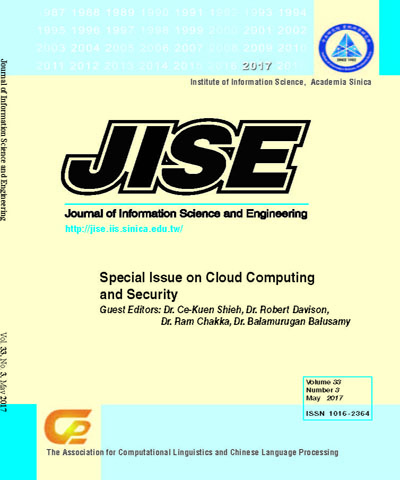
Journal of Information Science and Engineering
- OpenAccess
社團法人中華民國計算語言學學會,正常發行
選擇卷期
- 期刊
- OpenAccess
With the use of the Internet, mobile platforms, online commerce, and social media services, the footprints of human behavior can be easily recorded in the digital world, which generates data on an extremely large scale. Twitter as a big data social network becomes one of the most important sources for capturing up-to-date events happened in the world. Deriving topics from Twitter is important for various applications, such as situation awareness, market analysis, content filtering, and recommendations. However, topic derivation with high purity in Twitter is hard to achieve because tweets are limited to 140 characters. Previous works on topic derivation in Twitter suffer from low purity. In this paper, we propose corpus-based topic derivation (CTD) approach that combines a Twitter corpus and LF-LDA, which is a text processing model to identify topics and clusters of similar hashtags. We use asymmetric topic LF-LDA to obtain better purity of topics. Compared to intJNMF, a representative related work, the purity (F-measure) of our proposed CTD increases from 5.26% (27.81%) to 11.32% (34.28%) for 20 to 100 topics. We also propose a timestamp-based popular hashtags prediction (TPHP) approach by creating trending hashtags lists (THLs), which are lists of hashtags used by many users and make use of timestamps in tweets. We use the edit distance to find the difference between consecutive THLs. Then the difference can be used to calculate volatilety to find how people react to real world events. Compared to Hybrid+, a representative related work, the mean average precision (MAP) of our TPHP increases by 19.45% (week-day), 15.08% (week-week) and 16.95% (month-week).
- 期刊
- OpenAccess
Even though open stack boosts business agility, availability, and efficiency by providing a platform with on-demand, resource pooling, self-service, highly elastic, and measured services capabilities, it needs improvisation in the following blocks of open stack such as Neutron which provides the networking capability for Open Stack and Cinder Block acts as a storage component; due to centralized administration in the open stack cloud environment. The problem with these components is that more susceptible to external attacks, unpredictable responses depending on the network load and lack of maintaining the integrity since cinder block shares simultaneous access to the same data. In order to meet the above requirements this work has proposed an AutoSec SDN-XTR (Automated end to end Security in Software Defined Networks - Efficient and Compact Subgroup Trace Representation). In order to rectify the security challenges additionally an efficient security algorithm XTR is proposed for providing the encryption of the file content that also involves a trace operation to incorporate integrity checking. This provides efficient security by involving the Diffie-Hellman for key agreement (both the public key and private key) and ElGamal approach for encryption. Then after the networking process storage of the files content occur in the cinder block store environment. In the cinder store erasure codes algorithm is utilized for data recovery where less storage will be achieved since replicas are not utilized and duplication of file content will not be done instead only parity data will be created as in the concept of RAID (Redundant Array of Independent Disk). Now the unique data which are recovered in cinder block are already been secured by XTR encryption and should be effectively distributed.

